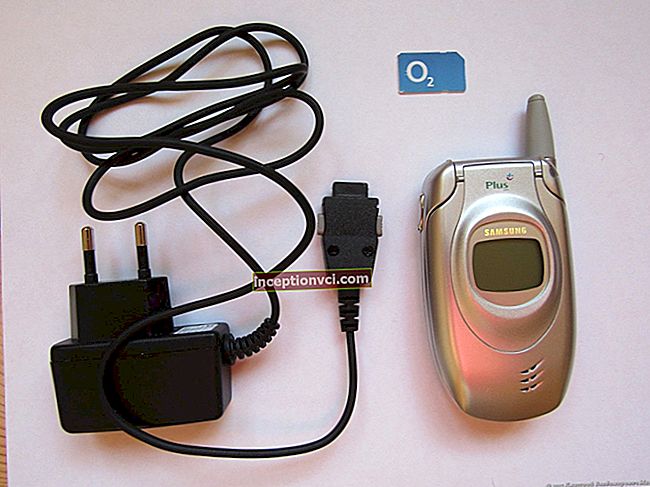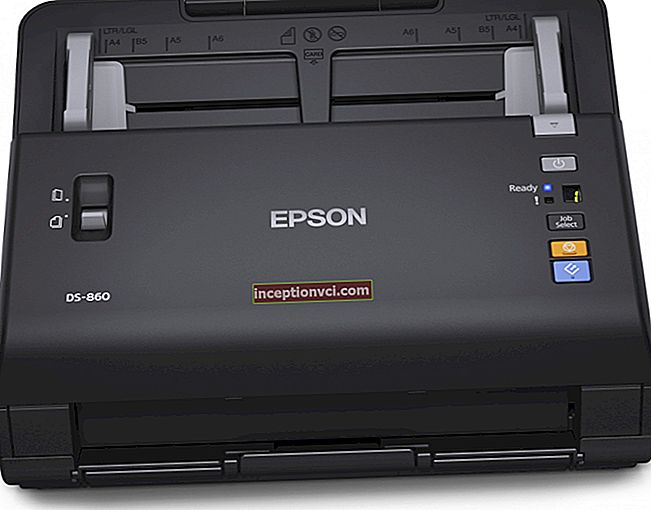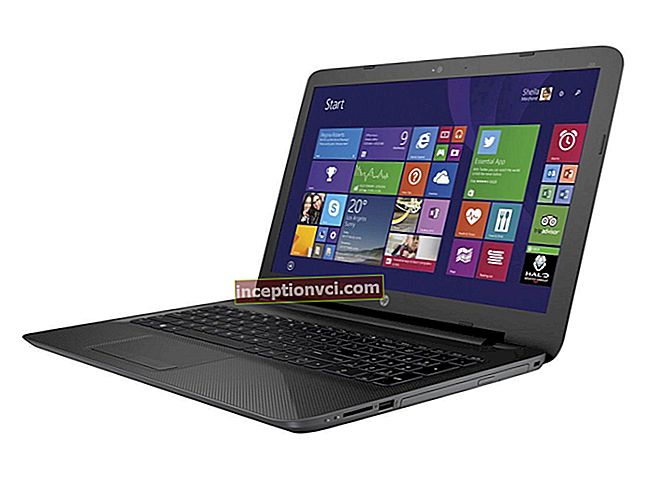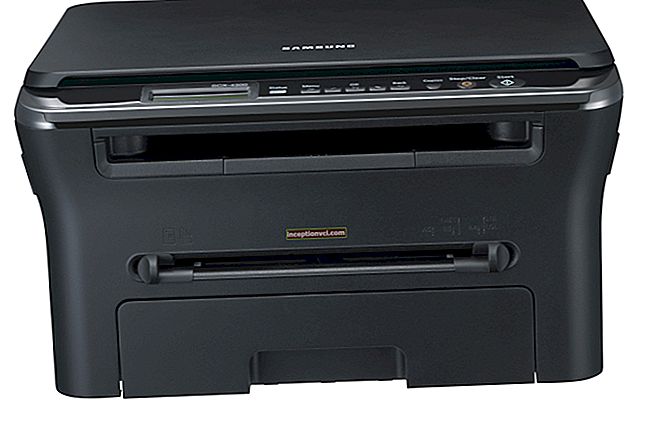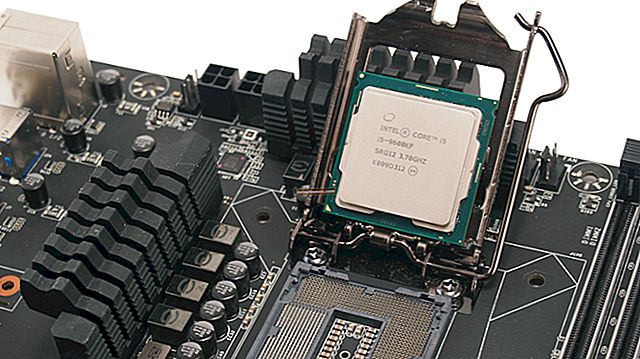Unlike many standard solutions that quietly enter the market and also quietly leave it, any innovative product always causes an active discussion, not only between happy owners, but also between those who just like to insert their "five kopecks". So it happened with ZyXEL Keenetic. Over the past year, there has been a lot of talk about him, but not only from the good side. Of course, Keenetic, like many other devices, has its drawbacks, but I cannot say that they are critical for me, besides, against the background of a large number of advantages, they are practically lost.
Why is Keenetic so attractive?
To understand what exactly the highlight of Keenetic is, you need to remember that this is the first ZyXEL home router in the line, which runs on the Linux operating system, which allows you to significantly expand its functionality and implement everything that could not be done using the previous generation of the Internet. - ZyXEL centers running ZyOS. But that's not even the point. Unlike other routers running Linux, Keenetic has not only a more complete set of features, implemented taking into account the wishes of users and the specifics of working with our providers, but also a more friendly implementation of all these features. This makes it a very interesting solution for a beginner.
One of the main features of Keenetic is its high speed, regardless of the type of connection to the provider used. As tests show, it can provide speeds up to 95 Mbps. For a long time, I thought that there was no particular point in such a high speed, since my provider only provides 30 Mbps. But recently, purely by chance, I noticed that the download speed from torrent trackers exceeds 10 MB / s, which is equal to the connection speed of about 100 Mbit / s.

In my case, torrents are downloaded from peer-to-peer or local resources, but this is not so important. After all, the main thing is not where, but how. Keenetic gave me the ability to download files at full speed, although some other models of routers, under the same conditions, will not allow to achieve even half of these results.
Keenetic has the ability to automatically restart the WAN interface. Many will ask what it is for. So, imagine this situation: you come home, but there is no Internet. Calls begin to the technical support service, and a long time to find out what is wrong. Technical support specialists usually recommend rebooting the router first. In many cases, this procedure helps and everything starts to work. Put yourself in the shoes of a provider: dozens, hundreds or even thousands of times you have to repeat the phrase: "Reload your router." This is probably annoying.

Keenetic makes it possible to reboot the WAN interface in automatic mode after three unsuccessful connection attempts. This means that many users will simply forget about Internet connection problems. This function will be useful not only for beginners who do not understand anything about these issues, but also for those who want to have stable access to the Internet, but do not have the ability to overload the device every time.
The ability to connect 3G / 4G modems will also be in demand. Many have a 3G or 4G USB modem with which you can access the Internet (if there is no signal from the provider, for example) without disrupting the network infrastructure.
Built-in torrent client. For the happy owners of NAS storage, this function will not be relevant and in demand, but all others should appreciate it, because you can connect an external HDD to Keenetic and download everything you need directly to it.

Many will think that all of these features are not surprising. The same capabilities have long been available in other brands of routers. You just need to upload an alternative firmware version and install a set of additional programs. But this is where one of the main differences between Keenetic and other models lies.If some users consider installing alternative firmware and poking around in Linux an important part of their daily life, then others, who are the majority, are unlikely to ever do this. They just don't need it. It is for this category of people that Keenetic was created, which makes it possible to get it all, as they say, right out of the package. But this does not mean at all that the Keenetic platform is closed. Advanced users can optionally expand the capabilities of their Internet center by installing additional packages, including TimeMachine support for backing up in Mac OS, DLNA media server, a new torrent client and many others.
One of the main disadvantages of Keenetic was that there were only 100-megabit models in the line, while many require a gigabit network. The release of the gigabit model in ZyXEL was talked about from the very beginning, however, no dates were indicated, and users had to build a gigabit network using an external switch.

"Gigabitka" appeared on the market in the middle of December last year. It was named Keenetic Giga. Judging by the specifications, the filling of the new Zixel is very similar to Keenetic. It uses the same processor, but the difference is mainly in the use of a gigabit switch and 2 USB ports with separate buttons to control them.
Keenetic GIGA design features
Let's start our acquaintance with the new Keenetic Giga with its design features. Visually, the Internet Center has remained almost the same. Keenetic has a classic design that is used in all ZyXEL Internet centers starting from the NBG318S and NBG334W EE models. On the front side of the case, there are 9 indicators that display the status of the power supply, WAN, LAN and WLAN segments, WPS activity and connection of USB devices.

On the back side of the case there are 4 LAN ports, a WAN port, a power connector for an external unit, a switch that allows you to quickly turn off Wi-Fi, a WPS button and a hidden Reset button. Additionally, Keenetic Giga has a power switch. There are also two connectors for connecting external antennas with a gain of 5 dBi.

Unlike the simple Keenetic, the Giga model is equipped with two USB 2.0 ports. Next to them are two buttons that are used to disconnect external USB devices in safe mode. Let me remind you that the previous Keenetic had only one USB 2.0 port, which, however, did not prevent you from connecting several devices to it using a USB hub. But, if it was necessary to safely disconnect an external device, it was necessary to disconnect all devices. In the new model, you can safely disconnect, for example, the hard drive without interrupting the operation of the connected 3G / 4G modem.
Let's take a look inside
As already noted, the hardware filling of the new Keenetic Giga has not undergone almost any changes. It is also built on the Ralink RT3052 processor, which operates at 384 MHz. This processor is a single-chip solution that includes an Ehternet switch, an 802.11n Wi-Fi module (2T2R mode, up to 300 Mbps), and a USB controller.

The amount of RAM has doubled, and the new model is 64MB. Flash memory, as in the previous model, is 8MB. In addition, a gigabit switch Atheros AR8316 was added to the board, with support for Jumbo Frames in the LAN segment, as well as an additional USB hub GL850G, on the basis of which two external ports are implemented. It is worth paying attention to the use of 2 small radiators, which ensure normal operation at high speeds when the hardware accelerator is turned on.
Keenetic GIGA software
The structure, design and capabilities of the Keenetic Giga web interface are almost the same as in the classic Keenetic, except that in the monitor window you can see the status of the second USB port. But I will not dwell on this in detail, everything is standard here.

I would like to touch upon additional features that will certainly interest all those users who are going to expand the functionality of their Internet center. Note that this feature will be of interest mainly to advanced users.For the majority of ordinary users, there will be plenty of basic features.
First you need to prepare the HDD. Ideally, it should be formatted with an ext3 or ext2 file system. Many people report that everything works under the NTFS file system and even under HFS +, which is used in Mac OS X. The easiest way to perform these manipulations is using Linux, but you can use special drivers and software for Windows and Mac OS. I am a Macbook Air user, and there was no particular desire to understand this software. It is much easier to install an Ubuntu Linux 11.04 virtual machine. This method allows you to solve the problem in some 10-15 minutes. Moreover, the Ubuntu download takes the most time. All other manipulations, including installing and formatting the disk, take very little time and, most importantly, users with a low skill level can perform them without any problems.

When preparing the disk, you need to create a system folder, then a bin folder, into which you need to copy the required script. Please note that your Keenetic must have firmware released later than November 10, 2011.

Now we connect the HDD to the first USB port and look at the log, where the following line should appear (the meaning of the numbers in brackets does not matter):

Next, you need to establish an SSH connection to Keenetic and run the script to complete the installation. To establish an SSH connection, you can use the ZOC6 utility for Mac OS. For Windows, putty can be used. To log in, use the password zyxel.

After logging in, the password can be changed to a more secure one. This is done using the passwd command.

Next, you need to download the list of packages that are available for installation (opkg update), install and update the available packages (opkg upgrade). It is recommended to run both of these commands before each installation of a new package and during other manipulations with packages.

Now you can start directly installing and configuring the required packages. Already today, there are many compiled various packages for Keenetic. For example, you can install a web server on Keenetic that supports MySQL and PHP, file sharing services, a media server, various proxies, torrent, file managers, etc. More details about the available packages and the specifics of their installation and settings can be found on the forum on the manufacturer's website. From a general, rather large list, I personally became interested in only two packages. First, I decided to install a new version of the Transmission 2.42 torrent client, which does not have such strict restrictions on the download speed of 1MB / s as the regular client. Although, there is nothing wrong with such a restriction. This value is determined empirically and guarantees the stable operation of the Internet center. But I was very interested to know what Keenetic Giga can do when removing this limitation.
According to the recommendations, the installation of transmission consists of installing at least two packages: transmission-daemon and transmission-web. Upon completion of the installation, the K90Transmissiond script will appear in the etc / init.d / folder, which is used to start and stop the service. If you want the transmission to start automatically, you need to replace the first letter K with S. You can also change the configuration of the service, but I left everything as it is. The entire installation process took less than a minute. The basic service must be disabled when using the new transmission version.
Access to transmission is made in the traditional way, at the address of the Internet center indicating port 9091. You do not need to enter your login and password. The first thing you pay attention to is the English-language interface, although the basic transmission interface is russified, but this is not the main thing.

Having put 8 files on the download, I removed the speed limit. Despite the fact that the processor was loaded by 98%, Keenetic Giga worked stably, there were no problems with speed for other services. The limiting upload speed was 2.7MB / s. If someone thought that the speed would be noticeably higher, then you simply did not take into account the limitations that the USB connection introduces. This must be taken into account when connecting to this hard drive over the network.
Tests have shown that the speed of data exchange with a USB HDD connected to Keenetic Giga is 5-6 times lower than the speed of direct connection of a USB drive to a PC. But, even this was enough to play BDRips without any problems.
If we talk about heavy video, then Keenetic, unfortunately, cannot cope with it. Although, this is not surprising. It is doubtful that the owners of Keenetic Giga will think about uploading video, the volume of which exceeds 40GB. Nevertheless, if the user needs this, then after the video download is complete, it is recommended to disconnect the disk and connect it directly to the player.
The second package that attracted interest is NETATALK. It makes it possible to organize support for TimeMachine backup systems based on Keenetic. According to the instructions, no difficulties should arise with installing and configuring this package. Indeed, the installation and configuration are intuitive, but I could not achieve the desired result and see the HDD connected to kinetics in OS X Lion. Unfortunately, three weeks of proceedings have yielded no result.
The described experience of launching additional packages is perhaps a little primitive, but ... I just tried to show that if someone wants to study this topic, then it's not so difficult to do this, but you need to have patience and dedication.
Real capabilities of Keenetic GIGA
Testing was carried out by connecting to a special test bench, which simulated working conditions with a typical provider. The stand makes it possible to test the speed for all types of connection (IPoE, L2TP, PPTP and PPoE), to check whether it is possible to support simultaneous work on the Internet and in the provider's local network, as well as the availability to assign routes via DHCP. The study of the peculiarities of IPTV operation and the stability of the device in general was carried out when connected with an IPoE speed of up to 40 Mbit / s, and the speed in the local network was 100 Mbit / s.
To begin with, let's decide on support for simultaneous work on the Internet and in the provider's local network, as well as assigning routes via DHCP. A modern Internet Center should support these features by default.
The test results at the stand showed that Keenetic Giga, without any restrictions, supports simultaneous operation on the Internet and in the provider's local network, as well as all 3 options for assigning routes via DHCP in all types of connection. This means that when using Keenetic, you don't have to worry about unpleasant surprises. You just need to turn on the Internet center, enter the connection parameters and you can be sure that no additional manipulations will have to be done.
Next, we tested the speed with different types of connection. At the beginning of the article, it was noted that in our time, high connection speed is very important, regardless of the restrictions that are set by the provider. For comparison, we used the results obtained in the process of testing the Internet center ZyXEL NBG460N EE with firmware version 3.60 (BFL.1). This internet center is based on the Atheros AR9132 chip, which operates at 400MHz and has a Realtek 8366SR gigabit switch. Works NBG460N EE under control of OS ZyOS. Keenetic Giga was uploaded with firmware version 1.00 (USD.2b) D0.
As a result of tests carried out on a test bench using the IxChariot synthetic test, the following picture was obtained. It should be noted that such results were obtained thanks to the use of a hardware accelerator. This feature has been implemented in all Keenetic Internet centers since the middle of last year.


We get the same good result when connecting PPoE. With PPTP connection, there is a slight performance gain in comparison with Keenetic. This is where CPU performance limitations begin to appear. In these tests, the NBG460N EE performed almost 2 times better. Accordingly, we can conclude that when using a gigabit connection to a provider and parallel use of a L2TP and PPTP tunnel connection (probably a very rare combination), Keenetic Giga is not your assistant. In such a case, it is better to use the NBG460N EE. But if we take into account the fact that today many providers are switching to a direct NAT connection, then Keenetic Giga, in this case, is out of competition. Accordingly, if even now your provider provides a 100 Mbit / s channel, purchasing Keenetic Giga you will always be ready to switch to a gigabit channel.


Finishing the conversation about the real capabilities of Keenetic Giga, I would like to mention the specifics of working with IPTV, where there is support for several multicast transmission modes.
I have chosen the automatic mode, in which, to reduce the load on the processor, the Internet center itself manages the Multicast traffic. If the provider supported STBs, it would be possible to select the mode of assigning a specific port. In this case, the Internet center directs Multicast traffic directly to the selected port, bypassing the processor, which makes it possible to preserve its computing power for solving priority tasks. At the same time, this port cannot be used for work in a local network and the Internet. This operating mode has been used in ZyXEL Internet centers for quite a long time and does not cause any complaints or questions. The automatic mode, when activated, the Internet center itself manages traffic, in theory it may turn out to be a little more complicated, but after the first experiments it became clear that with the use of a competent approach and optimized algorithms, there was no negative impact of IPTV on the operation of basic Internet functions. the center, including the wireless segment, should not be. A simple test was performed to demonstrate the viewing capabilities of IPTV using the wired and wireless segment.
I ran my ISP's IPTV playlist in a VLC player under OS X Lion on my Macbook Air connected over Wi-Fi, and in parallel on a Dune HD Smart media player that was connected over the wire. In both the first and second cases, the channel was viewed in HD quality with a bitrate of about 10 Mbps. During the test, no problems were found. At the same time, on the iMac, connected by wire, a movie was played in HD quality from the NAS, and on the iPad, watching TV from the Kartina service (http stream). At the same time, the processor load did not rise above 40%. This result will delight all those users who want to watch IPTV on several TVs, including via Wi-Fi connection, while maintaining a high and stable network speed.
Conclusion
So, let's summarize. After studying the capabilities of Keenetic Giga, we can say that this model is one of the most reliable among the Internet centers and has good performance. For 2 months of testing, there was not a single freeze or unexplained device behavior, even in the conditions of seventeen days of downloading and distributing torrents using the regular Transmission client, which can be clearly seen in the screenshot below.

If we talk about the performance of Keenetic Giga, it is worth noting very high speeds for PPoE and IPoE connections, however, in L2TP and PPTP tunnels, the speed values turned out to be much lower, and almost equaled the results of regular Keenetic. Of course, this can be considered as a drawback of this Internet center, but if we compare it with other models, then the best result can be shown only by those models in which a more efficient processor is installed, which, in this case, is responsible for the operation of the tunnel. If we compare with the models of classmates, then not many of them can achieve even such results. For example, the legendary Linksys shows the speed of the PPTP tunnel in the region of 17 Mbps, and the L2TP tunnel in the region of 25 Mbps.
I would also like to say once again about the well-developed functionality of the Keenetic Giga model. Here, the developers were able to implement everything that a user may need, regardless of the chosen provider. Mobile Internet is gaining more and more popularity, because it is not always and not everywhere there is an opportunity to connect to fast cable Internet. In this case, Keenetic and, in particular, the Giga model, turns out to be simply an irreplaceable assistant. In addition to being able to connect all your computers, laptops and communicators to the Internet, it helps to solve the problem of a bad signal. For example, you install Keenetic on a windowsill, where the signal is better, and you have access to the Internet from any corner of your apartment or house.
The last question: is the replacement of the original Keenetic with the Keenetic Giga justified? It is difficult to give an unequivocal answer to this question. It all depends on the specific tasks. For example, if your ISP connects to the Internet over a 100 Mbps channel and uses a direct NAT connection, a Gigabit router may only be useful for organizing a local network. In such a situation, you can easily get by with the classic Keenetic, but at the same time, you will hardly have to regret purchasing the Keenetic Giga. In theory, Keenetic Giga will work faster.
Speaking about the shortcomings of Keenetic Giga, I can see that during the use of the device I have never had problems that I should shout about and demand correction. The Internet center itself works very stably, even when you run a large number of test downloads on the built-in torrent client, without speed limits, there were no global problems. Wi-Fi also works stably, there are no spontaneous freezes or shutdowns, even during very active use of IPTV.
There is a little lack of a USB 3.0 port, which would remove the restrictions on the speed of data exchange with an external HDD, but in this case the restrictions would concern the processor, which is much more critical than the speed limits of the USB 2.0 hub.
The only important point worth mentioning is related to the problem of cloning MAC addresses in a gigabit switch used in Keenetic Giga. The manufacturer writes the following about this.

Another problem was discovered while working with Keenetic Giga. Through the differentiation of multicast traffic for LAN and WLAN interfaces, my Macbook Air could not automatically see the NAS and other equipment connected via Bonjour / Zeroconf via wires. To connect to it, you had to manually add a server. This is not to say that this is very annoying, but I would like to automatically see all the available servers. As it turned out, this problem is solved very simply, or rather, it has already been solved at the Keenetic firmware level. You just need to uncheck the box "Distribution of multicast traffic by interfaces" in the local home network organization section.

There is nothing more to say about the shortcomings. In all other respects, Keenetic Giga personally suits me 100%.


